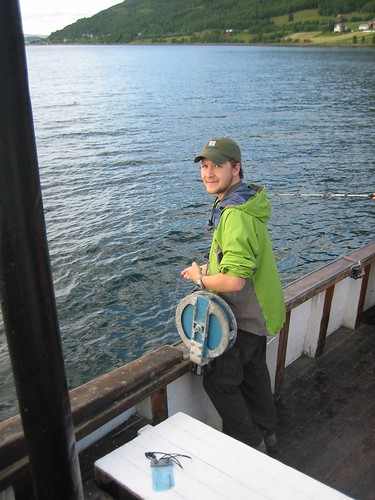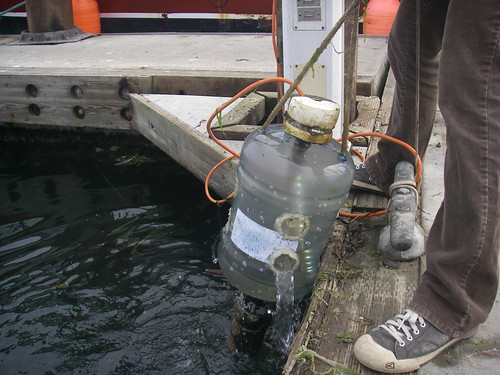Greetings SG Blog readers,
Although Oregon’s marine spatial planning process continues to unfold, the State is undoubtedly getting closer to developing a finalized, spatially explicit comprehensive plan for Oregon’s territorial sea. In its completed form, the plan will document how the State intends to protect important ecological areas, fishing grounds, beneficial uses such as recreation, and identify some preliminary areas for ocean renewable energy development within nearshore waters.
Over the last several months I’ve provided assistance to both DLCD and ODFW in support of this planning effort. In February, I attended seven TSPWG-sponsored public work sessions in Portland, Eugene, Warrenton, Cannon Beach, Waldport, and Reedsport. I assisted DLCD by developing promotional materials and recording public comment during the meetings. As for ODFW, the major pressing event has been the Scientific and Technical Advisory Committee‘s peer review of the Nearshore Ecological Data Atlas. I developed two specific documents for the review: a list of data gaps related to territorial sea planning, and a list of data that was considered by ODFW, but not used in the analysis of nearshore ecological resources. In the name of data management, I’ve also been working with ODFW staff to develop a relational database, using Access, to organize the vast amount of STUFF (spatial data, literature, scientific findings, etc.) that we’ve accumulated through this planning process.
….I don’t want to bore you too much…but that’s a quick summary of what’s been going on in my fellowship world….
And now I’d like to reflect on the title of this post – “Winds of Change.” For Oregon, this is definitely the dawn of a new era in terms of ocean planning and management, and for the addition of new human uses within the marine environment. In one way, the title is a nod in that direction. However, it also refers to a huge change in my life. Several weeks ago, I received an unexpected surprise – I was offered a full-time, permanent position with NOAA’s Pacific Services Center (PSC). For many reasons, the offer was something that I just couldn’t pass up! In my new position as a GIS analyst, I will focus on developing GIS-based tools to support coastal and marine planning in the Pacific region, and provide general technical assistance to PSC partners in Guam, American Samoa, and Northern Marinas Islands.
As the winds of change blow, my time as a Sea Grant fellow is quickly coming to an end. In the near future, I will be leaving the quaint coastal town of Newport, Oregon and relocating to the tourist mecca of Hawaii. It will be quite the change! I will miss the Oregon coast, surfing South Beach, the friendly Oregon sharks, porcini mushrooms, my coworkers, and new friends….but of course, I also look forward to a new and exciting opportunity. On a final note, I want to say thank you! to both Sea Grant and ODFW for making my fellowship experience priceless! It’s been a complete joy. I will definitely stay in touch, and by all means….if anyone comes tromping through Hawaii, please do not hesitate to look me up!
Cheers (soon to be ALOHA),
Ben



